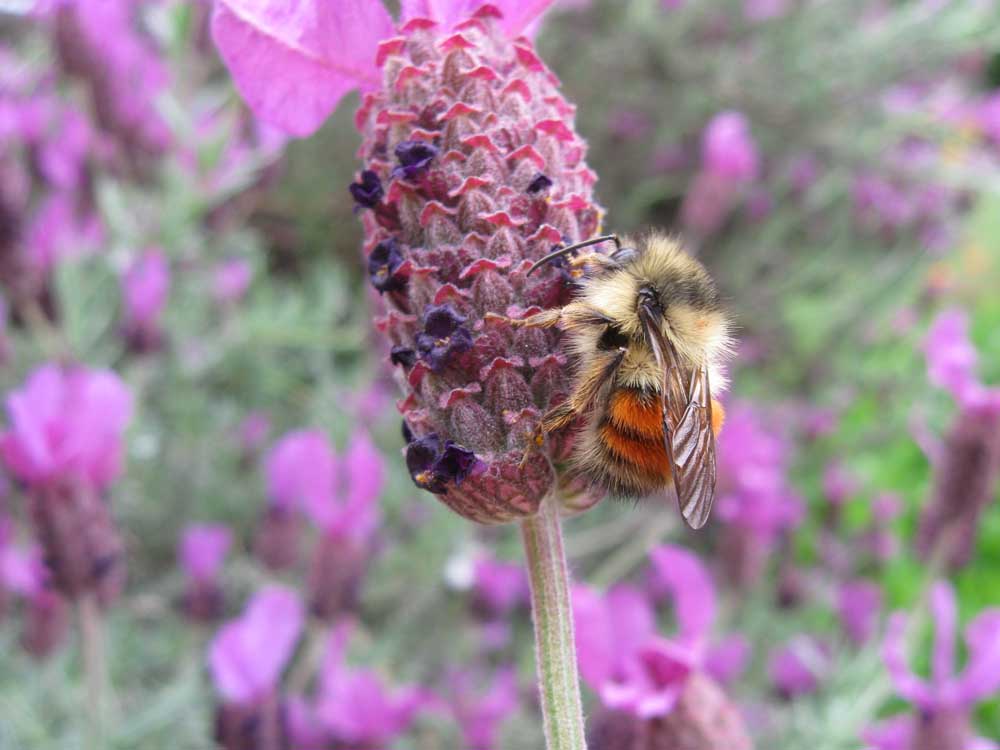Bees, wasps and yellow jackets
Published 12:00 am Tuesday, August 26, 2014

- Matthew Shepherd from The Xerces Society / Submitted photoLandscapes that are friendly to pollinators such as bumblebees will be a popular garden trend in 2015, according to the Garden Media Group.
At some point, we have all discovered an insect’s nest somewhere in our yard. Perhaps you think it might be a wasps’ nest, but it could also be a hornets’ or yellow jackets’ nest — you’re not really sure. It can be hard to tell — hornets and wasps are actually very similar. But learning about what’s buzzing in your garden is important, as each of these winged insects has different qualities.
Some scientific background
Trending
Bees, yellow jackets, hornets and wasps are all closely related. They’re all pollinators and they can all sting. Yellow jackets and hornets are a subset of wasp. Wasps eat meat (other forms of insects) until they reach adulthood, when their diet becomes carbohydrate-based with flower nectar. Bees branched off evolutionarily at some point, and instead of collecting flower nectar they started collecting pollen. They became the vegetarian equivalent of a wasp, and became the most important pollinator.
Honeybees and bumblebees can sting, but most other bees have stingers too weak to penetrate human skin, according to Eric Lee-Mader, co-director of the Pollinator Conservation Program at The Xerces Society. The fuzz on a bumble bee is what enables the bee to be such a great pollinator — the pollen sticks to that fuzz. Unlike bees, wasps and hornets do not die after stinging you because their stingers are not barbed and don’t get pulled out of their bodies.
Yellow jackets, aptly named for being yellow and black, are a smaller predatory subset of wasp. “Yellow jackets give all other insects a bad reputation because they can tend to be in the human landscape,” said Lee-Mader.
They typically like compost piles or garden soil and have nests in the ground. Yellow jackets can sting many times and are more aggressive than hornets or wasps. When they sting, they release pheromones so other members of their nest come sting you, too.
Lee-Mader cautions that if you start swatting at yellow jackets while on a picnic, for example, they will attack, especially if you’re near their nest. If you leave them alone, for the most part they’ll do the same. He also says yellow jackets fly over a huge area, so setting up a trap in your backyard is unlikely to influence their population, and you’ll continue to have them in your yard.
Hornets, also a subset of wasps, create enclosed paperlike structures as nests, like “the Winnie the Pooh nest in the tree,” says Lee-Mader. Wasps are the insects that build nests in the eaves of your house that are disc-shaped. Hornets and wasps are considered social insects because they form family colonies or nests. Hornets can be white-and-black-striped and appear less hairy or fuzzy than bumblebees. Wasps are almost nondistinguishable from hornets, as they both have similar body structures. Pollen wasps can be mistaken for yellow jackets but have thicker antennas. “Wasps … do get some pollen stuck on them and they move it between plants. It makes them secondary important pollinators, like hummingbirds or butterflies,” said Lee-Mader.
Trending
Beneficial or not?
So if you sense that you have an abundance of flying insects, does it benefit you or your garden to put up traps or attempt to get rid of them? Lee-Mader said, “You want the bees as pollinator, but you also want wasps because they’re preying on a lot of pest insects. The pest-management service that these wasps provide is enormous.”
Songbirds catch these insects and feed them to their young. So if you like having songbirds in your neighborhood, getting rid of a large food source isn’t a great idea. Lee-Mader said any garden insecticide you’re using in your garden to manage pests is only minor compared with what wasps are doing. He suggests that “insect biodiversity in home or garden overall is a net positive.”
There are different kinds of traps you can put up that pertain to specific insects. “Newer traps are pretty selective. I would imagine that there would be by-catch, where you would catch some secondary insects, but the number you catch wouldn’t be really significant,” said Lee-Mader. If there is one insect that seems to always be in our environment and is really aggressive and protective of the nest, it’s yellow jackets.
So what should you do if you find a nest? For the most part, you should let nature take its course. They help your garden out; they feed on pests; and the birds feed on them. It’s the circle of life.
— Reporter: 541-383-0651, swilkins@bendbulletin.com








